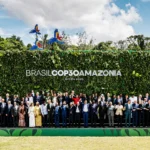When the United States and China announced a 90-day truce in May 2025 in the tariff war that has shaken international trade in recent weeks, the market breathed a sigh of relief — but not without caution. The decision came after intense rounds of negotiations in Geneva, aimed at containing the collateral damage that was already spreading through global supply chains and putting pressure on prices in strategic sectors.
What's in the agreement?
On the one hand, the US reduced tariffs on Chinese products from 1,45% to 30%. On the other, China reduced its tariffs on American goods from 1,25% to 10%. Although these new rates are still well above the levels prior to the tariff escalation — which were around 17.8% — the gesture is symbolic: it is the first sign of decompression since the beginning of the trade offensive reactivated by the new US administration.
What are the immediate effects?
The impact is already visible. Ports such as Los Angeles reported a 30% drop in import volumes in the first week of May, a direct result of the climate of uncertainty and high tariffs. Companies such as Walmart have announced price adjustments to absorb the new costs, while small and medium-sized companies report difficulties in adapting to a scenario that changes weekly.
Furthermore, the “temporary pause” climate does not eliminate the legal uncertainty that hangs over contracts, investments and strategic internationalization decisions.
And after 90 days?
The question that is on the minds of analysts and businesspeople is: what will happen after the truce expires? Although there is a possibility of an extension, there is no guarantee that a structural solution will be reached in time. The political game is still ongoing, with internal pressures in the US and China shaping the next chapters.
What does this mean for international business?
For Brazilian companies with ambitions to internationalize, the current situation demands strategic intelligence. The instability between two of the world’s largest economies could open up new opportunities in markets seeking supplier diversification. Supply chains that were previously dominated by Chinese or American players are being reconfigured — and there is room for new players.
At Bring Consulting, we closely monitor these movements and develop tailored strategies to help Brazilian companies navigate this new international scenario safely. More than reacting to changes, it is time to anticipate trends and build competitive advantage in a world that is reshaped with each political decision.


